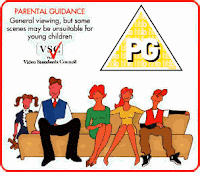Target audience

Labels: Jon Whyte, Target Audience

Labels: Jon Whyte, Target Audience
Labels: Advice, Ali Hunter, Cut, Film Opening, Final Cut, Guidance, Jon Whyte, Opening Sequence, Rough Cut, The Grifters, Tips
Three people star in the opening sequence: -
Labels: Behind the Characters, Crime Caper, Rob Cooper
Labels: Ali Hunter, Crime Caper, Genre, Jon Whyte, Soundtrack
'The Grifters'.
Labels: Behind the Name, Crime Caper, Rob Cooper, The Grifters
Labels: Ali Hunter, Fitzwillam Museum, Locations, Long Road Sixth Form, Paintings
This is the rough cut for our film opening to 'The Grifters'.
Labels: Crime Caper, Rob Cooper, Rough Cut, sequence
Labels: Inspirations, Location Ideas, Matt Flack, mood board
1.Shot Framing: Ews(extreme wide shot) This is the establishing shot where it slowly pans forward towards the characters. Action:The three characters Domingo, Alan and Johan. Info: Painting, Costume
Labels: Jon Whyte, Matt Flack, Shot schedule
.JPG)

Labels: Cambridge, Fitzwilliam, Location Ideas, Rob Cooper
Here is a list of props in which we'll need in order to film our opening sequence.;

Labels: Ali Hunter, Jon Whyte, Matt Flack, Props

A suit is the sort of formal look we are going for; suave and presentable. They would be worn in the scenes in which the characters are standing in the gallery looking at the painting, as they would need to have a good appearance to be taken seriously in this environment.
In my opinion the smart look can be achieved if just the collar and cuffs on the sleeves are visble, and the rest under a dark overcoat or jacket. Dark trousers / jeans would be best.
Hoodies or other casual clothes will be worn in the scenes showing the planning of the 'job'.
For practical reasons these would be worn under shirts that we will wear for the heist scenes, saving time by not having to do costume changes every time we want to shoot another part of the sequence. It would also provide a contrast between the formal dress code, and also give an insight to the characteristics of each individual; when in suits they are all in the same situation, whereas if they are shown in their own clothes it gives us a chance to show their different personalities.
The same trousers can also be worn in these scenes, for practical reasons.
Labels: Costume Design, Crime Caper, Rob Cooper
Here are some possible shot locations for our opening sequence;
Labels: Ali Hunter, Fitzwillam Museum, Long Road Sixth Form, Matt Flack, Possible Shot Locations
The following is a list of shots we will take when making our opening sequence;
Labels: Ali Hunter, Jon Whyte, Locations, Matt Flack, Rob Cooper, Shot List
Labels: Analysis, Film Opening, Italian Job, Matt Flack, sequence
Labels: Analysis, Film Opening, Jon Whyte
Labels: Ali Hunter, Film Opening, Synopsis



Labels: Logo, Production, Research, Rob Cooper
Labels: Analysis, Exisiting Logos, Jon Whyte, Matt Flack
Labels: Adventure Story, British Social Realist, Crime Caper, Decision, Rob Cooper, Supernatural Thriller, Teen Rom-Com
Labels: Ali Hunter, Analysis, Film Opening, Goldeneye, Matt Flack
We have chosen to replicate a crime caper movie; as it incorporates seriousness, humour and appeals to a massive audience. From research we also knew that a large number of films are crime capers.
Labels: Crime Caper, List, Rob Cooper, successful